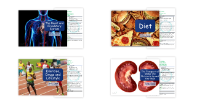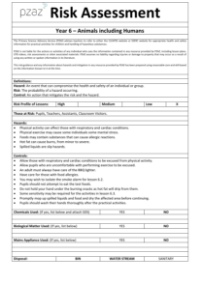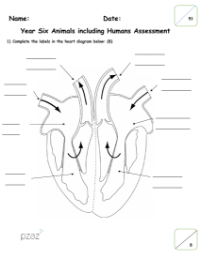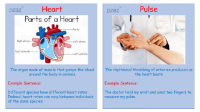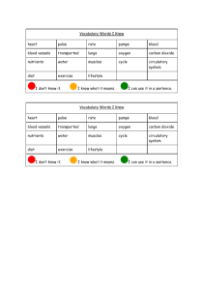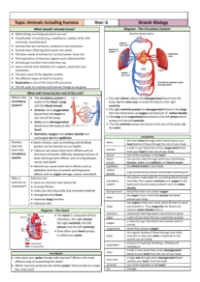Animals including Humans - Answers
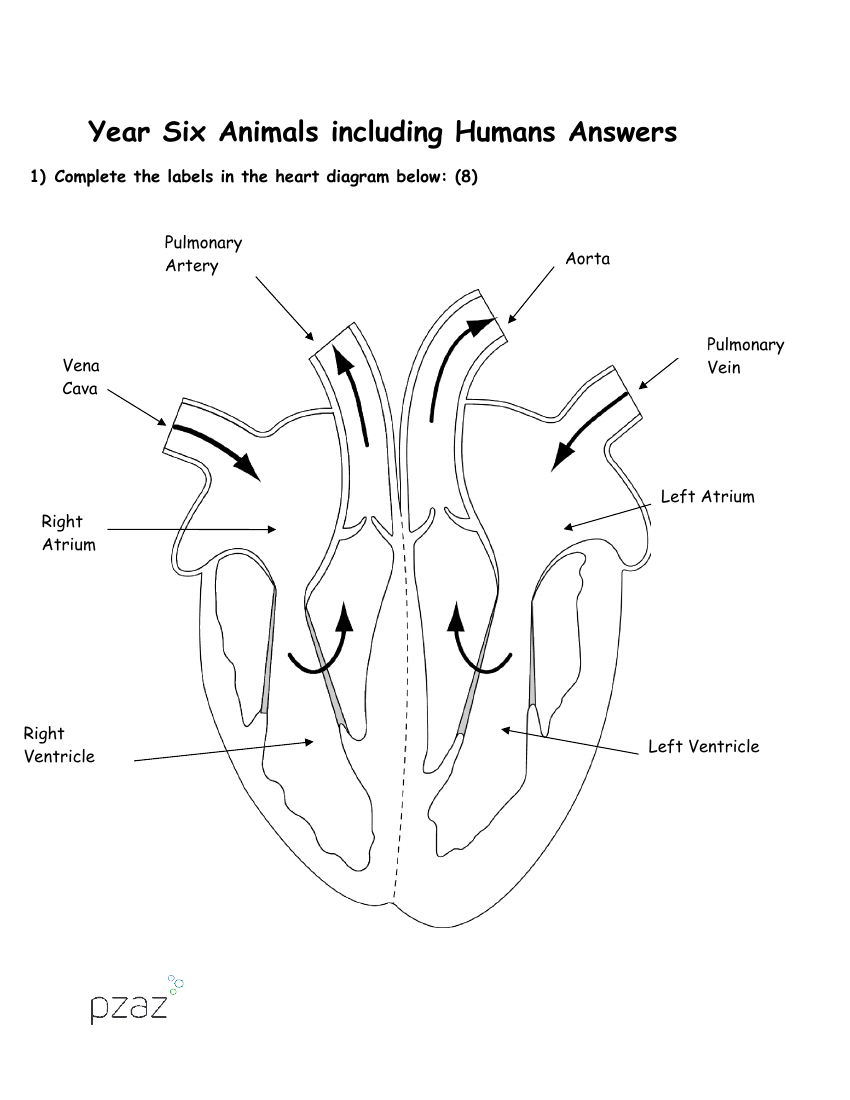
Science Resource Description
The resource provides answers for a Year Six lesson on 'Animals including Humans', focusing on the human heart, circulatory and digestive systems, nutrition, exercise, and the effects of drugs and alcohol. The heart diagram requires students to label key parts including the vena cava, pulmonary vein, aorta, atria, ventricles, and pulmonary artery. It explains that the left side of the heart has a thicker muscle wall because it needs to pump blood around the entire body, which requires more strength. Arteries are identified as vessels that carry blood away from the heart, with the pulmonary artery leading to the lungs, where carbon dioxide is released. The pulmonary vein is noted as unusual because it carries oxygenated blood back to the heart.
Further answers describe the digestive system, with students labeling parts such as the mouth, oesophagus, stomach, intestines, and rectum, along with their respective functions. Nutrient groups including proteins, carbohydrates, fats, vitamins, minerals, fibre, and water are listed, with proteins highlighted as essential for growth and repair. The importance of vitamins in preventing disease is mentioned, and common health issues like obesity and diabetes are linked to overeating. The small intestine is identified as the primary site for nutrient absorption into the bloodstream, and osmosis is named as the process by which nutrients enter the body's cells. The resource also touches on exercise, distinguishing between true and false statements about its benefits, and categorises various drugs as legal or illegal. It concludes with reasons why people might take drugs and the harmful effects of alcohol on the liver, including conditions like cirrhosis and liver cancer.

